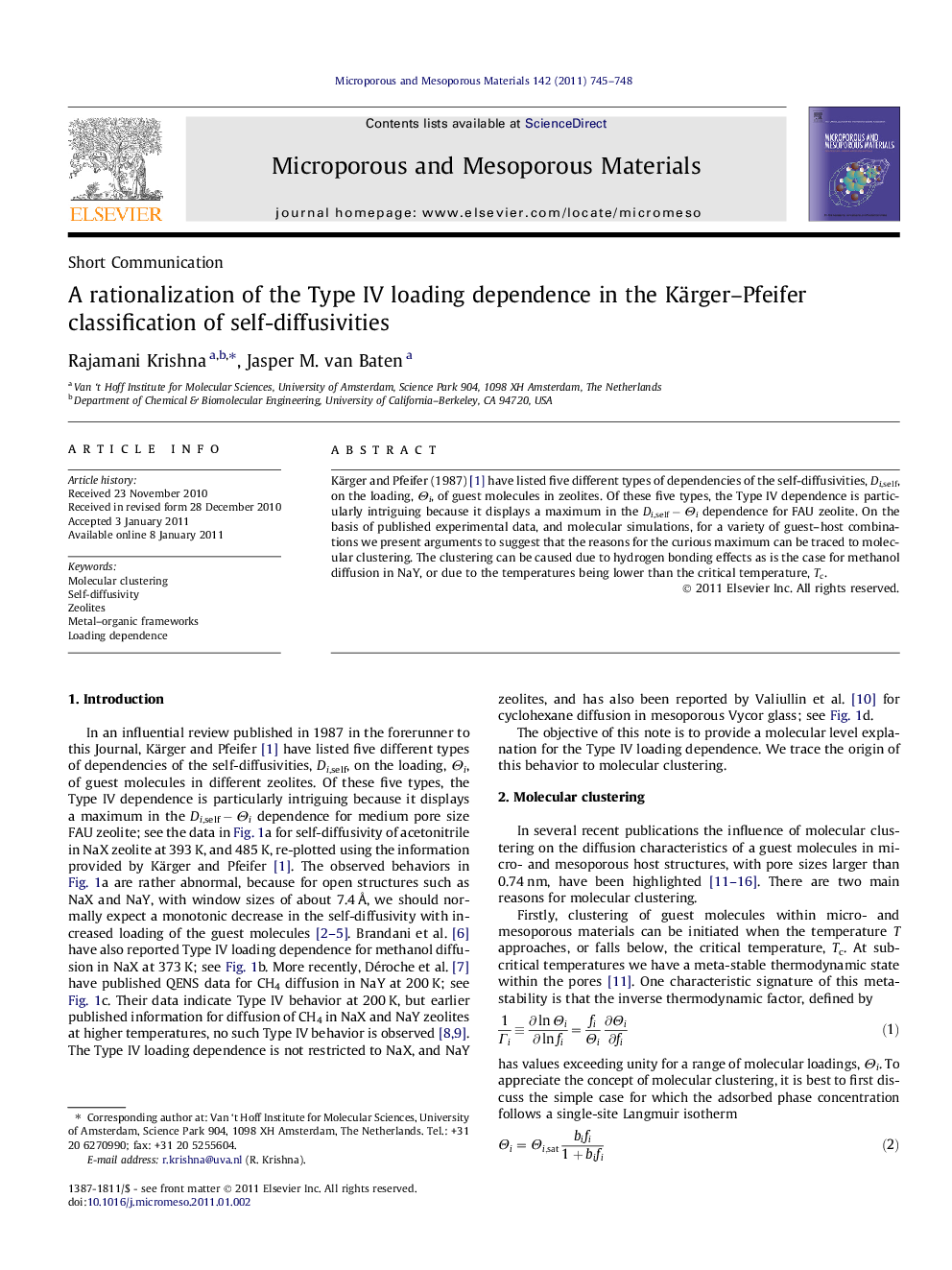| کد مقاله | کد نشریه | سال انتشار | مقاله انگلیسی | نسخه تمام متن |
|---|---|---|---|---|
| 74496 | 49092 | 2011 | 4 صفحه PDF | دانلود رایگان |

Kärger and Pfeifer (1987) [1] have listed five different types of dependencies of the self-diffusivities, Di,self, on the loading, Θi, of guest molecules in zeolites. Of these five types, the Type IV dependence is particularly intriguing because it displays a maximum in the Di,self − Θi dependence for FAU zeolite. On the basis of published experimental data, and molecular simulations, for a variety of guest–host combinations we present arguments to suggest that the reasons for the curious maximum can be traced to molecular clustering. The clustering can be caused due to hydrogen bonding effects as is the case for methanol diffusion in NaY, or due to the temperatures being lower than the critical temperature, Tc.
Figure optionsDownload as PowerPoint slideResearch highlights
► When the inverse thermodynamic factor exceeds unity, we have molecular clustering.
► Clustering occurs at temperatures below the critical temperature.
► The self-diffusivity versus loading displays a maximum when cluster formation occurs.
Journal: Microporous and Mesoporous Materials - Volume 142, Issues 2–3, July 2011, Pages 745–748